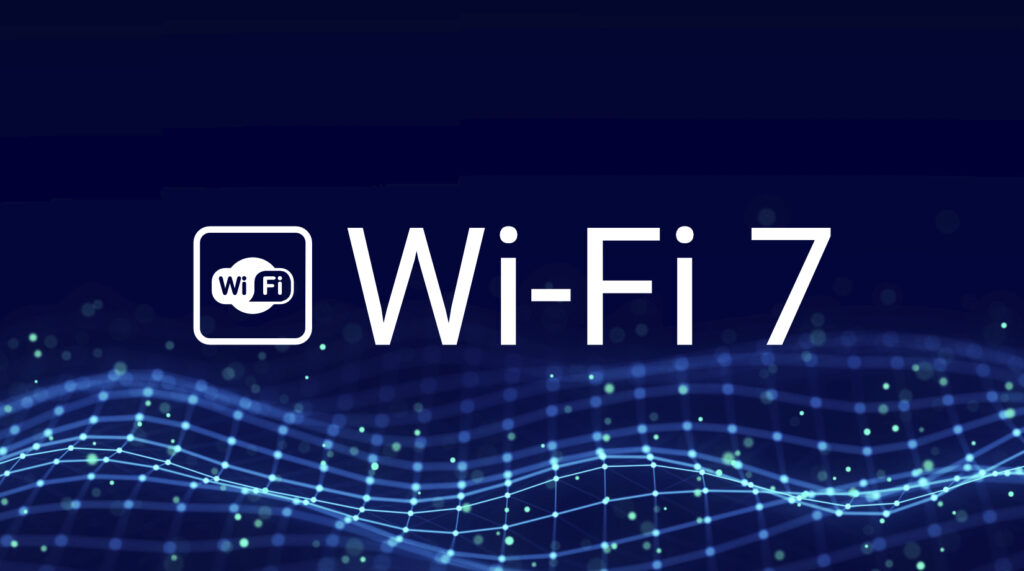Wi-Fi technology has advanced quickly in recent years, progressing briefly from Wi-Fi 6 to 6E. As customers are getting used to Wi-Fi 6E, its next version, Wi-Fi 7, is already being developed, offering higher speeds, less latency, and enhanced reliability. Here is all the information you need to know about it.
What is Wi-Fi 7?
The new Wi-Fi standard, IEEE 802.11be, intends to revolutionise the digital environment by improving bandwidth. This progress results in download speeds up to four times quicker than those attainable with Wi-Fi 6E.
However, the most significant aspect of the new standard is its capability to bypass network congestion using advanced signal modulation methods. However, were these improvements also pledged with Wi-Fi 6E? To comprehend this, let’s contrast the two criteria.
Comparing Wi-Fi 6E with Wi-Fi 7
While both standards use the 6GHz band, Wi-Fi 7 is notable for advancing considerably. This is because, unlike Wi-Fi 6E, Wi-Fi 7 incorporates broader channels, with a maximum width of 320 MHz. This significant increase directly enhances the capacity for transmitting data.
Another notable characteristic of Wi-Fi 7 is Quadrature Amplitude Modulation (QAM), a method for analogue signals to convey digital information efficiently. While earlier versions of Wi-Fi already included support for QAM, Wi-Fi 7 enhances this feature by incorporating 4K-QAM, which significantly enhances the capacity for data packing.
However, it is worth noting that there is an inverse relationship between QAM and range: as QAM grows, the range falls. Thus, Wi-Fi 7 requires a more powerful signal to sustain the same coverage.
In addition, unlike its previous version, Wi-Fi 7’s Multi-Link Operation (MLO) addresses connection problems by allowing devices and routers to connect, utilising several channels spanning different bands simultaneously. This improvement could address delay issues by enabling routers to send data packets via multiple channels instead of depending on only one. In addition, the new routers can also help improve channel consumption, adjusting to different situations and resolving range restrictions.
Will it enhance the dependability of the Internet?
When discussing a home Wi-Fi system, the main problem with wireless transmission is how the time is divided among devices, which causes delays when routers handle several devices. To resolve this problem, Wi-Fi 7 utilises Orthogonal Frequency Division Multiple Access (OFDMA) to enhance carrier waves and support more data.
However, it is worth mentioning that compatibility problems may occur when a Wi-Fi 7 router tries to connect with devices that are not supported. A complete transition to the new standard must utilise its possibilities properly.
Drawbacks of Wi-Fi 7
Just like any other technological innovation, Wi-Fi 7 has its restrictions. Currently, most devices are built to be compatible with Wi-Fi 5 or 6, suggesting that it may take a while for Wi-Fi 7 to be widely used. In addition, the fact that the IEEE still needs to adopt the new standard adds another level of complexity because the Wi-Fi 7 routers currently available may become outdated when the governing organisation adopts more rules and restrictions. Nevertheless, the Wi-Fi alliance has recently declared that they will complete the standards by Q1 2024.
Are gadgets already equipped with Wi-Fi 7?
Even though Wi-Fi 7 has yet to officially adopted by the IEEE, certain products currently provide compatibility with the new standard. Qualcomm’s FastConnect 7800 processor serves as an example, albeit it requires manufacturers to make modifications for complete integration. Regarding PCs, customers who are interested in embracing Wi-Fi 7 will need to purchase appropriate network cards to match this new standard.
How can you determine if your router is compatible with the latest standard?
If you have recently purchased a new router, there is a chance that it is already compatible with Wi-Fi 7. To verify if it is compatible, please check the specification page of your particular router. Search for information regarding the inclusion of IEEE 802.11be support in the standards.
Is it the right time to upgrade?
Since the standard is still vulnerable to possible revisions, there may be better times to invest significantly in changing your setup. Furthermore, it is essential to consider that device makers, like Samsung, will have to release upgrades that enable Wi-Fi 7 on their devices. So, even if you improve your setup, you may need more time to benefit fully.
